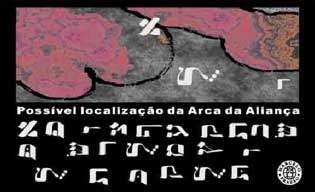May WEB ARTIST:MARCELO FRAZÃO / BRAZIL
Português / Espanhol:1- BIO AND SOME INFORMATION:
Master in Science of Art (Universidade Federal Fluminense). Graduated and Post-Graduated at the Escola de Belas Artes (EBA) of the Universidade Federal do Rio de Janeiro (UFRJ). He carried out the implementation of the workshop of ithography at the "Escolinha de Arte do Brasil", where he taught and co-ordinated the Engraving Nucleus (woodcut, litography and etching) from 1994 to 1997. Currently he teaches Engraving at EBA, UFRJ and at Bennett - RIO DE JANEIRO. He has participated actively in individual and collective art shows in Brazil and abroad, being granted many awards. Participated in the 13ª Xylon (the Triennial International of Engraving-Switzerlandand ) and Mostra Rio Gravura. He was curator of the extinct Galeria SESC de Copacabana from 1996 to 2000. Since 1999 he directs the ATELIER VILLA OLÍVIA.
"In my work the drawing is materialized through the form. It was in this way, through experiences, that I arrived at a personal way to represent my emotions and perception of the world. Simplifying the form, I arrive at its
minimum and even to at the abstraction, giving it a new sense, in this way, each observer decodes my works in accordance to his/her perception of the world. Thus, my idea turns into new ideas, new sensations. This happens in both my kind of works: analogical or digital."
2- WORK:
Telling the truth, Eros and Thanatos only have appeared together in my works since 2002, during my Master Studies. Before this, only Eros existed. I believe that Eros is really the start, therefore Eros is the life. Thanatos is the end or the renaissance. (It depends on the belief of each one of us.)
I always liked very much erotic art and literature, but I always had fear of working with this thematic. Thus in 1995 (only writing and dating is that I realized that it has happened almost ten years ago) I decided that I would create a series of erotic engravings and that they would be colorful. At that time I was very enthusiastic in drawing with "Paint Brush", and I decided to make the studies of those engravings using this very simple software. Some engravings that I made during this time were based on studies done in 'Paint Brush". That studies only served as a basis for the act of engraving and it does not mean the transfer of the computer language to the engraving matrix, it was much more an interpretation.

The cello above, belongs to an album published in 94. It was my first experiment of that series..
AThen I prepared a series that at first I called sublimated erotic, because they were forms that allowed an erotic interpretation of the image or not. Perhaps at that time there already was a not conscientious link between Eros and Thanatos, or between Eros and religion. I know that they were the Saint Teresa D ' Avila's letters which awoke me for this.
The ready sketches were filed during much time. I only came back to work on them to the Group OUANARTE's Project (1998-1999). I transformed the original images into maps of double meaning. The meaning depends on who is observing the work. These works were generated 100% in computer (Corel Draw). This series of Cartographies (Caderno de Cartografia / Book of Cartography) is at the Museum of the Essential and Beyond That ( Gallery Cartography and Globalization:
(https://archive.the-next.eliterature.org/museum-of-the-essential/museu/cartografias/).
Later those same sketches turned into a series of metal engravings (12) that resulted in the book ERÓTICA, apartnership with the Brazilian poet Armando Freitas Filho.

Eros appeared and continued in my work until the time of my Master Studies, when I started to research the death (Thanatos). I discovered that exists a narrow relation between them - a subtle relation, it is easy to understand but very complex to be explained in few lines. That series I called "Réquiem".
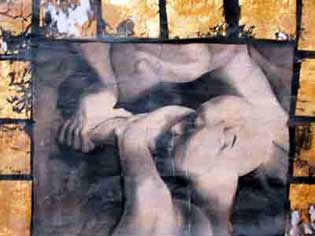
Above the detail of one of the works of the series Réquiem accomplished with digital images (which gave origin to the engravings), tempers, wav and gold leaf.
My last works of this thematic are:
I- The series in which I am working now (paintings, artist's books, sculptures), for an individual show.
II- "Seven Demons Got Out", a collaborative net.art work with Paulo Villela and Regina Célia Pinto (Museum of the Essential and Beyond That), "Gallery Borders of net.art - web.art and art today", https://archive.the-next.eliterature.org/museum-of-the-essential/pecadoscapitais/.
My idea was to work a closed subject, in this case the 7 sins and to give a unit to them. Because our languages in Art are well distinct, I suggested that they could be seen under an erotic point of view - Eros is for me one of the propulsive springs of the humanity, mainly when we are talking about sins. After some ideas and essays I finished producing a series of photos with everyday objects and hands - for me, a very erotic portion of the human body - those hands handling the objects. At the same time the hands suggests erotic forms, as the feminine sex in:
GREED
( https://archive.the-next.eliterature.org/museum-of-the-essential/erotica/avareza/avareza.html ),
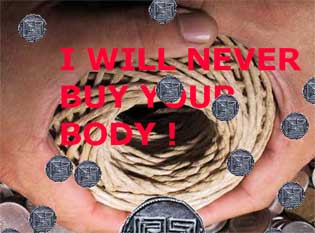
the hands closed in an anus shape in:
LUST
(https://archive.the-next.eliterature.org/museum-of-the-essential/erotica/luxuria/luxuria.html)

and closed in an anus shape in:
WRATH
( https://archive.the-next.eliterature.org/museum-of-the-essential/erotica/ira/ira.html ).
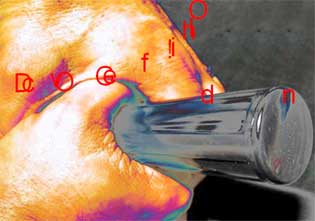
Well at least it was what my lens caught, it can be that the look of others has another reading.
This is not a problem, Eros and Thanatos, reveal themselves in different ways inside of us.Marcelo Frazão Websites:
Portfólio:
http://www.ateliervillaolivia.com/mf/index.html
WEB POESIA
http://www.ateliervillaolivia.com/mf/digital/tempo/index.html
Ensaio Fotográfico sobre o Centro do Rio
http://br.geocities.com/ocentrodomeurio
Atelier Villa Olívia
http://www.ateliervillaolivia.com
THE SECOND COLLABORATIVE REVIEW
WORKS:
Notebook of Cartography
by Marcelo Frazão
https://archive.the-next.eliterature.org/museum-of-the-essential/museu/cartografias/)
And
Seven Demons Got Out
by Marcelo Frazão
Greed
(ttp://arteonline.arq.br/erotica/avareza/avareza.html)
Lust
(https://archive.the-next.eliterature.org/museum-of-the-essential/erotica/luxuria/luxuria.html)
Wrath
(https://archive.the-next.eliterature.org/museum-of-the-essential/erotica/ira/ira.html ) .
1- Browser the erotic work of Marcelo Frazão is a pleasure... I suppose that it is, is not it?
By Muriel Frega
I believe that to work these two subjects is much complex. We risk to fall in the vulgar, propagandistic stuff or in the impact without content. Marcelo Frazão developes a so powerful graphical investigation, and he does that in an almost challenge form, causing that the visual quality prevails strong before we realize what we are really seeing or what we thought that we see. Using his own words, "each observer decodes my works in accordance to his/her perception of the world". At first appear the forms, the colors the graphic and the composition, that gives rise to the sensations, and only after all of this we understand clearly the thematic.
For many engravers the computer turned into the almost essential tool to work, Marcelo Frazão knows how to take advantage of this possibility of doing and undoing thousand times a work before submerging directly in the matrix. That adds a dose of freedom and spontaneity to the final work. And that same freedom is the one that Frazão shares with the cyber - spectator, proposing a departure point which invites each one of us to observe his works in our own way.
Hello Muriel,
Thanks for your words I must confess that it was difficult to build these images without falling in vulgar, in that which was already done or in the pornographic. At the beginning I had some fear in work with this theme, exactly because of this, but after I have started... I think that it is now my referred dish - it is almost a vice. I have to police me to do not fall into the pornographic - although Henry Miller can be both, it depends on the reading.
A hug,
Marcelo Frazão
2-Who does not like a "Happy End"?
By Regina Célia Pinto
NoteBook of Cartography
https://archive.the-next.eliterature.org/museum-of-the-essential/museu/cartografias/
I believe that Muriel Frega was perfect commenting the excellent graphic investigation and showing the way as Marcelo Frazão's images appear to the observer. The importance of the Peirce's semiotic becomes clear while observing the artist designs and engravers.
I have decided to write this review about Love because Eros is the God of love. It is enough of war, of suffering! All of us are already suffering too much with the situation of the current world.
I would like to deepen a little bit more into the "Notebook of Cartography", which belongs to the Museum of the Essential and Beyond That since 2002. The book is composed by a series of maps - to a inattentive or ingenuous observer they will look only like maps. However, on the second "blink" soon become visible very simplified sexual masculine and feminine organs. It is interesting to remember that since the Rock Art and in all cultures, human being have been done sexual organs representations.Example:
Img. 1: Mehináku - Male and female
Author: Hirakumã, man, brazilian indian, 45 years old
M.H. Fénelon Costa / 1965
(gouache on paper, 47,5 cm X 32, 5 cm)

Starting with Bosch and Picasso which all of us know and, arriving to Contemporary Art, lots of artists and poets, among them the excellent Brazilian Poet Carlos Drummond de Andrade have been working with the erotic theme.
Img.2 - Hyeronimus Bosch, Garden of Delights

Img.3 - Pablo Picasso, Phallus and Nude
Links to works of contemporary artists:
Also in net.art, web.art many artists and visual poets have explored this issue, including some of this newsletter.
Which will be the cause of that?
The answer appears soon:
"The reproduction sexual activity is common to the majority of animals and to men, but, apparently, only the men transformed the sexual activity in erotic activity." (Bataille, Georges. O Erotismo. Lisboa, Editora Antígona, 1968)
"Fundamental really is the love, it is impossible to be happy alone!" The happy passion introduces an enormous happiness. The loving wish is completely different from bestiality or of another problem. When it appears in this last way we are in front of something exactly of nature of the treatment of the wish in the capitalist subjectivity. The body is political. The machine of wish is a work machine and a war machine, where the promised Paradise always is in the untouchable, unattainable, perpetual future. To this wish remits the first maps of Frazão's Notebook of Cartography: the war maps.Img.4
However I am going to concentrate me on pages of the "Notebook of Cartography ", which talk us about the hope to find the possible location of the Alliance Ark (Img. 5) or in the Treasure Hunted (Img.6) because their titles remit to the playful side of love.
Img. 5
Img.6
Muriel Frega’s question in “Two of Copas” returns and receives other meanings in this case belonging to the full adventures universe of the masculine gender while child.
— Will it be the love a game where we can locate the Alliance Ark to find the Treasure: the own love, which does us to dream and to float in an unlikely limit. Treasure hunted and lost arks remit us to movies and images of beauty that has been generating, since Gene Kelly dancing’ in the rain – going until Casablanca, “Play it again, Sam!, or "The Purple Rose of Cairo" (1985) by Woody Allen! Unforgettable and irresistible stories that we do not tire of watching.
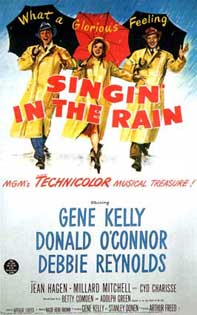
To conclude I would like to give you the same gift that, in the terrific Italian movie "Cinema Paradiso", the old employee of the cinema give to the boy whem he is already a man : a coil of film mounted with series of love kisses, never seen before because censured, scenes of the happy ends that always we desire for ourselves and for the world:

- Who does not like a Happy End? This treasure that always we look for and not always we find…References:
BATAILLE, Georges. O Erotismo. Lisboa, Editora Antígona, 1968
FOUCAULT, Michel. História da Sexualidade 1. Rio de Janeiro, Edições Graal, 1988.
GUATTARI, Felix - ROLNIK, Suely. Cartografias do Desejo. Petrópolis, vozes, 1986.
PAZ, Octavio. O Labirinto da Solidão e Post. Scriptum. Rio de Janeiro, Paz e Terra, 1984.PS: I would like to invite everybody that are reading this review to reflect a little about the expression Happy End. In these times of insecurity in which the war machine crushes cultures and human beings or explodes beside us, consequence of the poverty, exclusion and corruption, the best Happy End we could wish is the terminus of all of this. However what should we do in this situation? Impotence? Perhaps? It would already not be a first step to finish with the daily wars, could not us to extend the hand to the "enemy” and try to calm the disputes?
3-The Saramago's Metaphor
By Alice GabrielDear Regina,
At first I would like to say how I apreciate this idea of a collaborative review, it is completely up to date - the collective intelligence posts in
practice. It would be wonderful that many people of several cultures could collaborate. It seems to be a very special initiative and it would be a waste do not understand this process and do not seize this opportunity to
exchange ideas.Returning to the review, it is impressive how Marcelo Frazão manages to represent the current times in this excellent Notebook of Cartography and, it is necessary to tell that the artist does that with very simple graphic and
technological elements. It is just my admiration which makes me adding some comments to the criticism of this "notebook". The first of them is relating to education, the work is a notebook, so it is interesting to ask:_ What is the western society teaching about the body and sexuality to our children?
So many years after Freud and about forty years after the commented sexual revolution, which is the family , school and Church's paper on the transmission of that subject to young people. Will it be that these three institutions are walking at the same direction? Our youngs are being formed in which way? What is being taught to them: freedom with responsibility or individualism and competition? And the sin, does it live beside us?Regina, you have made us think more in ourselves and gave a Happy End to our Sunday with your inspired chronicle: "Who does not like a Happy End?". Apologies, but here from the other side of the ocean, perhaps in a grayisher
day, I am going to break a little this happiness. It is just because I reminded of Saramago, and of his magnificent "Ensaio sobre a Cegueira" ("Essay on the Blindness"), where he reminds us the responsibility of having eyes when the others already lost them". To whom does not know the portuguese writer José Saramago, that book tell us the history of an imaginary city where suddenly almost all of its inhabitants became blind and then a progressive darkening and correspondent illumination of the
qualities and terrors of the man happens (And of the women as well, in a special manner.) Thinking on that I will ask:Using Saramago's Metaphor, would not be us, the artists and critics gathered in this technological proximity without borders some of those that are not yet blind? Is it not our the responsibility of exchanging our ideas about
that and to protest on what is occuring in the world? Why does not talk about wars through the opportunity that the Marcelo Frazão's Art is giving to us? It would not be this a way of trying better understand the world and
the human being, despite all the injustices and atrocities that occur near and far from us? Of to exercise fully the principles of the fraternity,
distant of any rancor or hatred ?Alice Gabriel
Dear Regina and friends :
I am satisfied of being taking part in this project, although a little bit far from it , because I am writing the thesis and the available time is very small.
I want to congratulate the participation and the result: the collaborative reviews are very good.
A great hug for all,
Jorge Luiz Antonio
Brazilian Digital Art and Poetry on the Web
4-The Greed, the Wrath and the Lust, enigmas to be deciphered.
By Regina Célia PintoSeven Demons Got Out , Marcelo Frazão's original creation, is a reading of the seven deadly sins through an erotic point of view. Frazão is also responsible for the artistic creation of the three sins: the greed, the wrath and the lust, which are the reason of this review. "There is no sin under the quator's line." That was said in the XVII century Europe and some time ago became a verse of a song by the Brazilian composer Chico Buarque de Hollanda.
It is almost a common place to tell about the sexual freedom in the Brazilian colonial times. According to some historians, the colonial Brazil was really the land of sins, not of the sexual freedom. However, the interesting is to reflect on the notion of sin in the contemporary art world.
Thinking about the mass media (television, magazines, outdoors) what we notice is their deep sexual motivation. Sex sells. The contemporary cinema has also produced several movies that involve sex, and many times sex with violence. Would it be sexual freedom, sin or market? And what about globalization and the new social relations that are being developed through the Internet, are the greed, the wrath and the lust happening in them? We have never made a study on this subject, but we are almost sure that the sins* are circulating through the optic fibers, in the same way that they have circulated among human beings since the world or the history "started" : "People are like the bubbles in a stream- Always changing and always the same." The human condition: human, excessively human.
What really interests us is the readings that Marcelo Frazão makes of the some of the seven deadly sins: the quite intelligent and creative process that he used to construct them. The technologies used by the artist were Java Script and digital photograph. The work can be considered an excellent photographic essay of hands and daily objects. Marcelo is an excellent photographer. At no moment we feel to be in front of the gratuitous one or the chocking one. The sound and the movement of some images follow the photos and also had been very well decided. Everything is in its place, nothing is an excess, but the best is exactly that we always need some time to understand where the artist wanted to arrive with his images, what he is really saying. When it happens we feel surprised and satisfied to have deciphered the "enigma".
* The word "sins" is used here only as a word which names those human feelings and there is not any religious focus in it.
5- Marcelo answers and thanks
Dear Regina,
I have loved to be the May collaborative review's guest artist! The review is very good as all you do. Thank you so much! Also many thanks to Muriel Frega and Alice Gabriel.
If you allows me I would like to say something about the last text you sent, when you wrote:
"When it happens we feel surprised and satisfied to have deciphered the enigma" - I do not agree, perhaps because I do not understand your point of view in this case. When I built the seven deadly sins' series, I have never intended "to understand" but "to feel" what goes beyond of comprehension.
Whem I work with the erotic theme, the rational is always off, it is my mechanism of creation. To complete this reasoning I would like to add to this review a poetry which is the dedication of my book Homo Sapiens - Sexualis:To everybody who practices
practiced
or will practice,
in act or thougth
to all that stoped this practice
and miss it
and to all that are afraid of practicing
with the hope that the pulse
be greater than the brake
because nothing replaces what we live
see
and feel
human and imperfect feelings
- deliciously imperfect.A kiss and thanks,
Marcelo Frazão
Dear Marcelo,I agree with you. I did not refer to understand the sins! Of course feelings can not be understood. I was thinking of your magnificent images and in the time we carry to realize that they are related to "deliciously imperfect human feelings". It was that the enigma! However it was great your participation because it revealed us more about your creative process.
Okay?
Thank you so much for this feedback,
Regina


